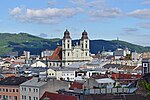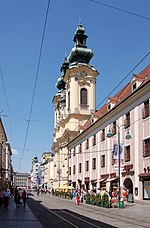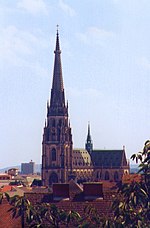Linz
Austrian state capitalsCities and towns in Upper AustriaLinzOil campaign of World War IIPages including recorded pronunciations ... and 3 more
Pages with German IPAPopulated places on the DanubeThe Holocaust in Austria

Linz ( LINTS, German: [ˈlɪnts] ; Czech: Linec) is the capital of Upper Austria and third-largest city in Austria. Sitting on the river Danube, the city is located in the far north of Austria.30 km (19 mi) In 2018 the city had a population of 204,846 within its administrative urban area.
Excerpt from the Wikipedia article Linz (License: CC BY-SA 3.0, Authors, Images).Linz
Main Square, Linz Innere Stadt
Geographical coordinates (GPS) Address Nearby Places Show on map
Geographical coordinates (GPS)
| Latitude | Longitude |
|---|---|
| N 48.305833333333 ° | E 14.286388888889 ° |
Address
Dreifaltigkeitssäule
Main Square
4020 Linz, Innere Stadt
Upper Austria, Austria
Open on Google Maps











